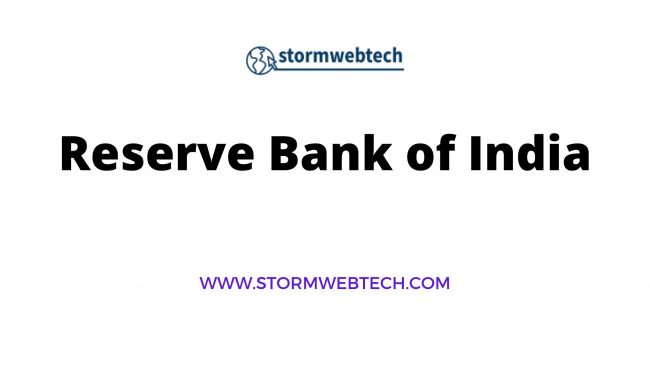Let’s read about What is RBI ?, RBI gk facts, What is Reserve Bank Of India upsc, Important GK facts about Reserve Bank Of India (RBI).
What is RBI ( Facts about Reserve Bank Of India ) -:
The Preamble of the Reserve Bank of India -:
“to regulate the issue of Bank notes and keeping of reserves with a view to securing monetary stability in India and generally to operate the currency and credit system of the country to its advantage; to have a modern monetary policy framework to meet the challenge of an increasingly complex economy, to maintain price stability while keeping in mind the objective of growth.”
~ The Reserve Bank of India is called the central bank of India. It also controls the operation of all the banks in India and the economy of India. RBI exercises control over the country’s currency and credit systems.
~ In 1926, the Hilton Young Commission ( Royal Commission on Indian Currency and Finance ) recommended the name Reserve Bank of India for the first time for the central bank.
~ The Reserve Bank of India was established in accordance with the provisions of the “Reserve Bank of India Act, 1934”.
~ The Reserve Bank of India was established on 1 April 1935.
~ The primary objective of Reserve Bank of India is to undertake consolidated supervision of the financial sector comprising Scheduled Commercial and Co-operative Banks, All India Financial Institutions, Local Area Banks, Small Finance Banks, Payments Banks, Credit Information Companies, Non-Banking Finance Companies and Primary Dealers.
~ It started in 1935 as a private bank. At the time of its inception, RBI had an authorized capital of Rs. 5 crore. At that time almost all the capital was in the hands of private people.
~ Initially the office of the Reserve Bank of India was established in Kolkata. Presently the office of RBI is located in Mumbai. In 1937 it was shifted from Kolkata to Mumbai.
~ Even after independence, the Reserve Bank of India acted as the central bank of Pakistan till June 1948. RBI also acted as banker to Myanmar (Burma) government.
~ Sir Osborne Smith was the first Governor of the Reserve Bank of India.
~ C.D. Deshmukh was the third governor of RBI. He was the first Indian governor and the first RBI governor of independent India.
~ It was during the tenure of CD Deshmukh that the Reserve Bank of India was nationalized on 1-1-1949.
~ At the time of nationalization of banks in 1969, L. K. Jha was the governor of the Reserve Bank of India.
~ The official insignia of RBI is the palm tree and the tiger. It is derived from the insignia of the East India Company.
~ RBI does not conduct normal banking business.
~ Presently RBI is wholly owned by the Government of India.
~ KJ Udeshi became the first woman deputy governor of the Reserve Bank of India. He was appointed to this post in 2003.
~ Reserve Bank of India has four zonal offices. Which are located in Chennai, New Delhi, Kolkata and Mumbai.
~ Apart from this, the Reserve Bank of India has 27 regional offices and 4 sub-offices.
~ The functioning of the Reserve Bank of India is directed by the Central Board of Directors. The members of the Central ~ Board of Directors of RBI are appointed by the Government of India. And this appointment is made for a term of four years.
~ The Central Board of Directors consists of a governor and not more than four deputy governors, four directors to represent the regional boards, two members – usually the Economic Affairs Secretary and the Financial Services Secretary – from the Ministry of Finance and ten other directors from various fields.
~ The Reserve Bank of India gets the printing of currency notes under its control.
~ The work of manufacturing one rupee notes and coins is done by the Government of India.
~ The Reserve Bank of India, as a distributing agency, distributes the notes and coins issued by itself and the Ministry of Finance, Government of India.
~ RBI advises the government on monetary policy and fiscal policy.
~ RBI acts as the banker to the government. The Reserve Bank of India deals with the management of government debt, buying and selling of government securities, etc.
~ RBI acts as the Lender of the Last Resort in emergency situations. Under this, it provides financial assistance by providing loans on the basis of securities.
~ The Reserve Bank of India looks after India’s national gold and foreign exchange reserves.
~ The Reserve Bank of India acts as the official representative of the International Monetary Fund (IMF).
~ The Reserve Bank of India provides loans to commercial banks at cheap rates.
~ RBI ( Reserve Bank of India ) encourages financial institutions. And provides suitable resources to these institutions related to agriculture, industry, government schemes, foreign trade etc.
- National Agricultural Development Bank (NABARD)
- Industrial Development Bank of India (IDBI)
- Small Industries Development Bank of India (SIDBI)
- National Housing Bank (NHB)
~ Scheduled Banks, Non-Scheduled Banks and Non-Banking Financial Institutions etc. come under the jurisdiction of RBI.
~ Every commercial bank has to open its account with RBI. When there is an inter-banking transaction, this type of transaction is called a clearing house facility.
Thank you for reading What is RBI ?, RBI gk facts, What is Reserve Bank Of India upsc, Important GK facts about Reserve Bank Of India (RBI). Please do comment and share the knowledge.
Read More -:
